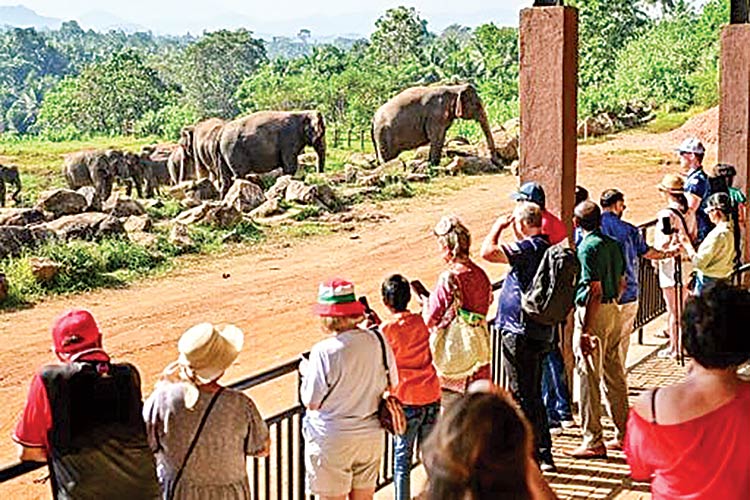Life style
Towards a disability-friendly health system
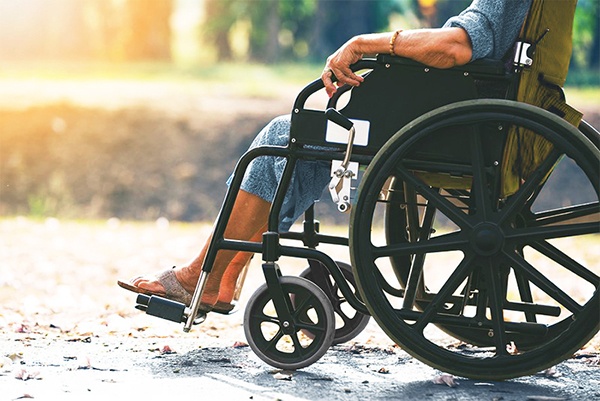
Gaps in the health care system burden those with disabilities with an added cross. In the backdrop of the International Day of Persons with Disabilities which fell on December 3, we spoke to many stakeholders to push for collective national interventions to enhance the quality of life of those with disability.
by Randima Attygalle
Nisha Shareef from Kandy was born with a rare spinal cord abnormality which left her wheelchair-bound for life. Introduced to rehabilitation at age 11, Nisha’s quality of life improved. Thanks to the vocational training she received through the Ragama Vocational Training School, she learned the art of watch-mending. Today at 50-years, she runs her own business in the Kandy town, her example empowering fellow wheelchair users.
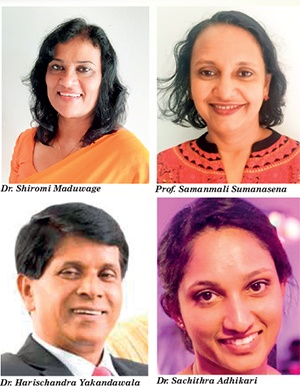 Health challenges for those in Nisha’s shoes are many. Inability to control the passing of urine, catheter and diaper dependency, frequent urine infections and bed sores are among them. Management of all these issues is costly says Nisha who lobbies for a special concession for adult diapers and other medication required by those with disabilities. “Accessibility to public toilets including those at hospitals is a nightmare for us,” she says. Nisha urges the health authorities to have disability-friendly infrastructure at hospitals and to dedicate a help desk and a hotline at least at Teaching Hospitals to assist those with disabilities.
Health challenges for those in Nisha’s shoes are many. Inability to control the passing of urine, catheter and diaper dependency, frequent urine infections and bed sores are among them. Management of all these issues is costly says Nisha who lobbies for a special concession for adult diapers and other medication required by those with disabilities. “Accessibility to public toilets including those at hospitals is a nightmare for us,” she says. Nisha urges the health authorities to have disability-friendly infrastructure at hospitals and to dedicate a help desk and a hotline at least at Teaching Hospitals to assist those with disabilities.
Many young girls and women with mental disabilities and those who are vision impaired left alone at homes are often sexually exploited, she points out proposing a state-supported day-care system to shelter them while their parents or other care givers are at work. This would help ensure their safety.
Having fallen off a rambutan tree at ten, Lasantha Chandimal from Dampe off Madapatha, became paralyzed. Having lost both his parents by 15, Lasantha’s life took a turn for the worse. The Samaritans at the Ragama Rehabilitation Hospital not only uplifted him from a bedridden patient to a wheelchair user but also trained him to maneuver a special tricycle. Lasantha, 36-years old today, has lost his job with the closure of the plastic factory he worked at. His wife, a wheelchair user herself, also worked there.
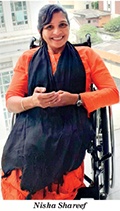 A spinal cord injury makes Lasantha often susceptible to kidney dysfunction. “I’m a catheter-user and I developed a urine infection during the lockdown which left me helpless with no access to medical treatment. With my temperature running high due to the infection, I called for an ambulance several times to no avail. Finally I had no choice but to scrape my savings and get treatment at a private hospital.”
A spinal cord injury makes Lasantha often susceptible to kidney dysfunction. “I’m a catheter-user and I developed a urine infection during the lockdown which left me helpless with no access to medical treatment. With my temperature running high due to the infection, I called for an ambulance several times to no avail. Finally I had no choice but to scrape my savings and get treatment at a private hospital.”
The absence of special assistance at OPDs, indifference of the support staff and exploitation of those with disability by some, makes matters worse. Improving disabled-health literacy at ground level, improving sanitation facilities for people with disability in hospitals, sensitizing support staff and creating awareness on available help devices are among Lasantha’s suggestions to ease the burden of this community.
Over a billion of people, about 15% of the world’s population, according to the World Health Organization (WHO) have some form of disability. Half those with disability cannot afford healthcare, compared to a third of those without disability. People with disability are more than twice as likely to find healthcare providers’ skills inadequate and people with disability are four times more likely to report being treated badly; and they are nearly three times more likely to be denied healthcare, WHO affirms. The World Bank literature on ‘Disability Inclusion’ documents that ‘many persons with disabilities have additional underlying health needs that make them particularly vulnerable to severe symptoms of COVID-19, if they contract it. Persons with disabilities may also be at increased risk of contracting COVID-19 because information about the disease, including the symptoms and prevention, are not provided in accessible formats such as print material in Braille, sign language interpretation, captions, audio provision, and graphics.’
Translating sensitization on ‘disability and rehabilitation’ into practical reality is urgent, points out Manique Gunaratne, Manager Specialized Training and Disability Resource Centre of the Employers’ Federation of Ceylon. Manique who lost her vision in her 20s due to Retinitis pigmentosa had no proper local guidance to a rehabilitation system. The overseas doctors whom she consulted empowered her on ICT systems available for vision impaired people. “This has made me what I am today,” says the activist who lobbies for help desks which could offer guidance for people with disabilities and their families to make informed decisions. “Very often when a child with a disability is born, parents have no clue what to do with it. If the medical condition turns out to be disability, they are even more helpless,” notes Manique who also proposes a ‘Priority Card’ on health nee
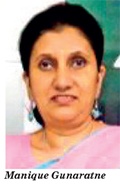
ds and making disability representation stronger at policy-level within the health sector.
The role of collaboration between doctors, physiotherapists and the beneficiary in determining the best assistive device cannot be understated says H.D. Mala Nandani, Administrative Officer, Rehab Lanka which manufactures s
uch devices. “An assistive device has to be a customized and very often there is little awareness among the poorest of the poor who depend on a donated wheelchair which could very often compound the disability.” The National Secretariat for Persons with Disability provides a stipend for such devices, she adds. The local manufacturing volume of assistive devices should be increased for better availability, notes Mala who lost the use of one leg due to a vaccination mishap as a child. “At ground level, the knowledge of personal hygiene among those with disabilities is very poor; hence there should be a system similar to that of midwives to help the families of the disabled in terms of knowledge and guidance to proper health channels.”
The COVID emergency situation which put the local public health system under unprecedented strain has driven the health authorities to design new interventions including meeting the needs of people with disabilities, notes Dr. Shiromi Maduwage, Consultant Community Physician from the Youth, Elderly and Disability Unit of the Ministry of the Health. “We are now developing a system to reach out to those in need in future emergencies. We have already launched a programme to empower care givers during the pandemic. This is facilitated by the National Secretariat for Persons with Disability.
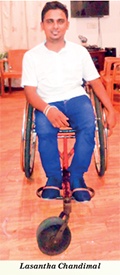
“
A system to improve the COVID-related health messages through Braille and sign language is also underway she says. While the state provides a monthly disability allowance, certain gaps in the system including the need for disabled-friendly infrastructure have been identified; and these need to be bridged, says Maduwage. “The elderly population is growing and disability will be an added burden. Community based rehabilitation is already being strengthened by the health sector to mitigate the challenges and ground level officials sensitized though the MOH divisions.”
Upgrading the school curriculum to incorporate health issues of those with disabilities including their sexual an
d reproductive health and safety can help sensitize future health policy makers to
catering for their needs, remarks Dr. Harischandra Yakandawala, Medical Director of the Family Planning Association and Consultant to the project on sexual and reproductive health during emergencies. “People with disabilities often have barriers in accessing information and we are collaborating with several agencies in addressing this including making online counseling services accessible by victims of gender based violence.” Women and girls with disabilities are the most vulnerable to sexual violence which could result in unwanted pregnancies and sexually transmitted diseases, he says citing the need for organized shelters to provide care for young girls and women enabling their caregivers to be productively employed during day time.
Encouraging all parents to “dream for their child” despite odds, Samanmali Sumanasena, Professor in Paedeatric Disability and Head of the Department of Disability Studies, Faculty of Medicine, University of Kelaniya, urges all partners in paediatric health services to support families with children with mental and physical disabilities. “Research shows that early intervention can make children more cognitively competent and they can be developed into very productive citizens”. In this process, access to correct information, proper referral systems, child intervention services, updated technology for optimum benefits, access to general health care and family support systems are imperative, she says. Training parents and caregivers to routinely intervene to improve their children’s quality of life is important, she points out. Lack of specialists who
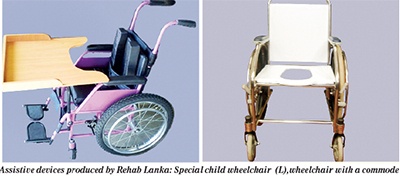
can address the concerns of children with special needs in the country is a major bottleneck in enabling wider reach. The Special Needs Programme which was launched in Colombo District in July to meet this challenge is being expanded to the rest of the island as well, says Prof. Sumanasena.
Rehabilitation which is recognized as a human right by the United Nations’ Convention on the Rights of Persons with Disabilities, improves the functioning status of people with disability to achieve the highest possible functional outcome, notes Dr. Sachithra Adhikari, Acting Consultant in Rehabilitation Medicine from the Rheumatology and Rehabilitation Hospital, Ragama.
“Lack of an established care pathway directed towards rehabilitation following initial treatment of disability, is a major drawback. Rehabilitation services are provided only by a few hospitals which hardly meet the need.” She goes on to note that the need to generate awareness on the importance of rehabilitation and its cost benefit both among the healthcare professionals and the public is urgent. Drawing attention to limitations in available rehabilitation personnel and infrastructure, she said the lack of coordinated service provision, leadership for financial and administrative support required for rehabilitation service are problems that need addressing. Also, social acceptance of those with disabilities rather than mere sympathy is important together with sensitivity to their plight.
Life style
Sri Lanka’s first elephant orphanage celebrates 50 years
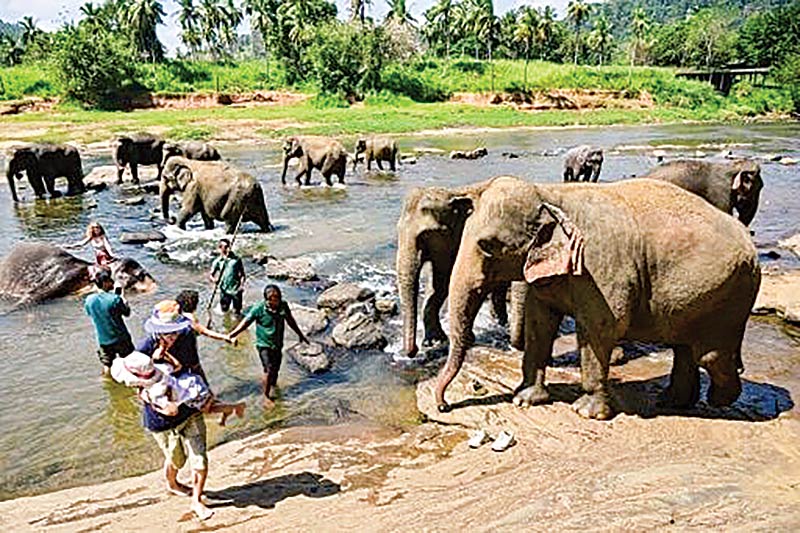
By Amal Jayasinghe
Pics by Ishara Kodikara
Sri Lanka’s main elephant orphanage marked its 50th anniversary on Sunday february 16 with a fruit feast for the 68 jumbos at the showpiece centre, reputedly the world’s first care home for destitute pachyderms. The Pinnawala Elephant Orphanage lavished pineapples, bananas, melons and cucumbers on its residents to celebrate the anniversary of their home, which is a major tourist attraction.
A few officials and tourists invited to the low-key celebration were served milk rice and traditional sweets while four generations of elephants born in captivity frolicked in the nearby Maha Oya river.
“The first birth at this orphanage was in 1984, and since then, there have been a total of 76,” said chief curator Sanjaya Ratnayake, as the elephants returned from their daily river bath.
“This has been a successful breeding programme, and today we have four generations of elephants here, with the youngest 18 months old and the oldest 70 years,” he told AFP.
The orphanage recorded its first twin birth in August 2021 — a rarity among Asian elephants — and both calves are doing well.
Two years before the orphanage was formally established as a government institution in February 1975, five orphaned elephants were cared for at a smaller facility in the southern resort town of Bentota.
“Since the orphanage was set up at Pinnawala in 1975, in a coconut grove, the animals have had more space to roam, with good weather and plenty of food available in the surrounding area,” Ratnayake said.
The home requires 14,500 kilos of coconut and palm tree leaves, along with other foliage, to satisfy the elephants’ voracious appetites.
It also buys tonnes of fruit and milk for the younger calves, who are adored by the foreign and local visitors to the orphanage, located about 90 kilometres (56 miles) east of the capital Colombo.
It is also a major revenue generator for the state, earning millions of dollars a year in entrance fees. Visitors can watch the elephants from a distance or get up close and help scrub them during bath times.
– Tragic toll –
The facility lacked running water and electricity at its inception but things improved as it gained international fame in subsequent years, said retired senior mahout K.G. Sumanabanda, 65.
“I was also fortunate to be present when we had the first birth in captivity,” Sumanabanda told AFP, visiting the home for the jubilee celebrations.
During his career spanning over three decades as a traditional elephant keeper, he trained more than 60 other mahouts and is still consulted by temples and individuals who own domesticated elephants.
Twenty years ago, Sri Lankan authorities opened another elephant home south of the island to care for orphaned, abandoned or injured elephants and later return them back to the wild.
While Pinnawala is seen by many as a success, Sri Lanka is also facing a major human-elephant conflict in areas bordering traditional wildlife sanctuaries.
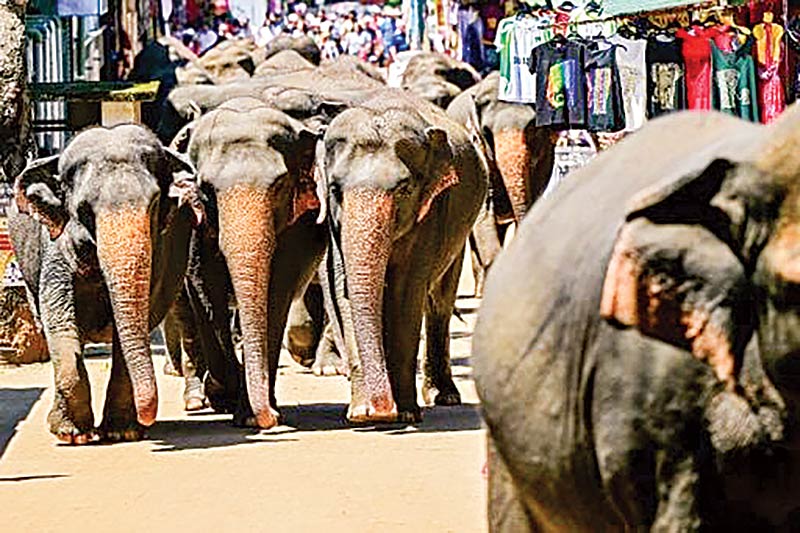
Elephants return to Sri Lanka’s Pinnawala Elephant Orphanage after taking their daily bath in a river
Deputy Minister of Environment Anton Jayakody told AFP on Sunday that 450 elephants and 150 people were killed in clashes in 2023, continuing an alarming trend of fatalities in the human-elephant conflict. The previous year saw 433 elephants and 145 people were killed.
Killing or harming elephants is a criminal offence in Sri Lanka, which has an estimated 7,000 wild elephants and where jumbos are considered a national treasure, partly due to their significance in Buddhist culture.
But the massacre continues as desperate farmers face the brunt of elephants raiding their crops and destroying livelihoods.
The minister was confident the new government could tackle the problem by preventing elephants from crossing into villages.
“We are planning to introduce multiple barriers—these may include electric fences, trenches, or other deterrents—to make it more difficult for wild elephants to stray into villages,” Jayakody told AFP.
Life style
Growing the Cultural Landscape with Suhanya Raffel
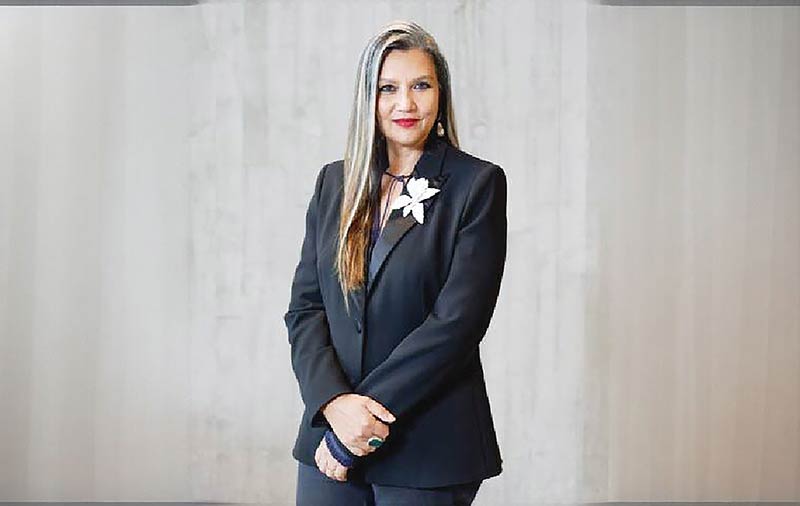
The Geoffrey Bawa Trust which was launched its 2025 is followed by Curatorial Conversations Series. Recently a presentation was made S by M+ Museum director and Geoffrey Bawa Trustee Suhanya Raffel. Speaking at the new Bawa Space on Horton Place, Raffel drew on extensive experience in the museum and art world to present insights and programming from the M+ Museum in Hong Kong. M+ is Asia’s first global museum of contemporary visual culture and presents itself as an intersection of visual art, design and architecture, and the moving image.
The evening presented an opportunity to hear from a leading expert in the museum field and discuss Sri Lanka’s present and future cultural landscape. It also highlighted the role of the Geoffrey Bawa Trust in conserving the legacy of the architect and his collaborators, and promoting contemporary art and design. “There are amazing artists, great designers, and reactive minds in Sri Lanka and the region,” Raffel said at a press event earlier in the afternoon. “There is opportunity in the aspiration to establish things, artists doing very important work, and the energy of individuals to try to make a difference.”
In part, this opportunity stems from the lack of established large-scale infrastructure to conserve Sri Lanka’s modern cultural legacy and support emerging artists. While there is the scope to shape the domestic art world and build institutions reflective of the local cultural community, there are also limitations and challenges in realising this potential.
Raffel spoke extensively about the need to build curatorial skills and knowledge and nurture cultural leaders in the region. Recognising this need, the Geoffrey Bawa Trust maintains public programmes, including exhibitions, residencies, tours, and lectures, to broaden public discourse and knowledge on the built environment and the arts in Sri Lanka and overseas. To fulfil curatorial needs and encourage growth in artistic and cultural institutions such as museums, the Trust employs a dedicated curatorial team and runs a robust internship and training programme. It is hoped that building this skill base will encourage others to explore similar career opportunities and support art, design, and architecture in the region. Sri Lankan visual arts over the past century have enjoyed wide international acclaim. “Sri Lanka is known globally for its creative work,” says Raffel, “it is culturally very strong.”
Geoffrey Bawa is a great example of this global influence. During his lifetime, the architect was very well-known in Sri Lanka and among contemporaries around the world. His structural, landscape, and furniture designs continue to guide and inspire. “It is very important for makers to be seen with their international peers,” Raffel explains. This cultural engagement on regional and international platforms is paramount for ensuring open dialogue and exchange. This means supporting collaborations, encouraging foreign markers to come to Sri Lanka, and exhibiting Sri Lankan work internationally.
The Trust is working to support this global dialogue by hosting installations by artists and makers from Sri Lanka and abroad, as was done in celebration of Geoffrey Bawa’s 100th birthday and again throughout the To Lunuganga programme from 2023-2024. The Trust took Geoffrey Bawa’s work to the world in 2024 with the travelling It is Essential to be There exhibition in Sri Lanka, India, and the United States.
The Trust is proud to be part of major professional international forums such as the International Confederation of Architectural Museums and the Committee for Modern and Contemporary Art Museums, both affiliated with the International Council of Museums. These platforms are vital for global knowledge sharing and advocacy. “We want more of these types of collaborations to happen both with the Geoffrey Bawa Trust, but also other arts and cultural institutions in Sri Lanka,” says Raffel.
In furthering this mission, the Trust is excited to present the new Bawa Space as the organisation’s public face and offer opportunities for the public to engage with the Trust’s work. Located in a recently restored Bawa-designed house from 1959, the Bawa Space doubles as the Geoffrey Bawa Trust headquarters and archives, as well as a new gallery and space for talks and events that will continue year-round.
Life style
Colombo Fashion Week 19-22 February: Two decades of creating the Fashion Eco-system in Sri Lanka

This year CFW will showcase a selection of Emerging Designers alongside established Sri Lankan designers. Adding international flavour will be well known designers from India Suket Dhir, Urvashi Kaur and Zaheer Abbas from Pakistan.
Colombo Fashion Week (CFW), presented by Mastercard, enters its 22nd year in 2025 with its Summer edition, marking another milestone in its journey as one of the four fashion weeks in Asia that have surpassed 2o years.Emerging Designer initiative of CFW this time remains one of its main pillars, providing an entry point for the next generation to pursue design-based entrepreneurship. This in line with the introduction of the Craft Fashion Fund this year is a testament to this commitment. The Craft Fashion Fund will select two winners, one who incorporates batik and another who utilizes crafts other than batik. This initiative passed 20 years.
Over the years, CFW has proven to be the backbone of Sri Lanka’s fashion design industry—its only voice—while creating a fashion ecosystem that provides support to new emerging designers entering the industry. Informally known as South Asian Fashion Week, it serves as a regional hub due to its geopolitical advantage. It is also one of the most significant fashion weeks in South Asia, having played a crucial role in revitalizing the country’s fashion design industry.
This year, Colombo Fashion Week has also expanded its international footprint since joining as a founding member of the newly created BRICS International Fashion Federation. This aligns with CFW’s ongoing mission to bridge diverse fashion markets and foster creative dialogue across continents. As part of this federation, CFW has signed a designer exchange program with BRICS, where a designer from a BRICS country will showcase their work at CFW, and a Sri Lankan designer will present their collection there. CFW continues to play a pivotal role in presenting Sri Lanka through the lenses of arts, culture, and sustainability, further contributing to destination marketing on a global scale.

The Head Table From L to R: Harsha Maduranga, GM – Vision Care, Yatila Wijemanne, Chairman – Juniper, Dr. Vibash Wijeratne, Dirand CEO – Ninewells, Shamara Silva, Mrkt & Media Dir – Unilever, Ruwan Perera, CEO – NDB Wealth, Kamal Munasinghe, Area VP and GM – Cinnamon Grand, Ajai Vir Singh, Founder – CFW, Sandun Hapugoda, Country Mgr – Mastercard, Samrat Datta, GM – Taj Samudra, Bernhard Stefan, MD – Nestlé Lanka, Ramani Fernando, Founder – RF Salons, Arjuna Kumarasinghe, MD -Cargills Food & Beverages
Ajai Vir Singh, Founder, Colombo Fashion Week stated: “Colombo Fashion Week has consistently demonstrated its commitment to developing Sri Lanka’s fashion industry through strategic international partnerships and innovative platforms. Our growing international recognition and expanding designer network reflects vital role this platform plays in positioning Sri Lanka through its creative industries.”
Mastercard, as the presenting partner, continues to champion CFW’s vision of sustainable and inclusive fashion innovation, focusing on digitizing sustainability initiatives and supporting small and medium fashion enterprises.
Sandun Hapugoda, Country Manager, Sri Lanka & Maldives, highlights: “Mastercard is thrilled to partner with Colombo Fashion Week once again, celebrating the incredible talent and creativity within the fashion industry. This partnership aligns perfectly with our commitment to support local artistry. Together, we aim to inspire new possibilities, connect communities, support sustainable fashion initiatives, and elevate the local fashion industry to a global audience, delivering a truly priceless experience. We also anticipate CFW to be a great support to boost the Sri Lanka tourism industry as well.”
The Craft Fashion Fund encourages young designers to engage with and incorporate Sri Lankan crafts into their collections. This approach has been highly successful for designers in other South Asian countries, where traditional crafts have helped establish a unique identity for them. Sri Lankan fashion has its best opportunity to develop a distinct identity when designers integrate local crafts into their work. The developing of this identity has been professed by CFW among the design fraternity, so they are able to create market demand beyond Sri Lanka.
The Emerging Designer initiative of CFW remains one of its main pillars, providing an entry point for the next generation to pursue design-based entrepreneurship. This in line with the introduction of the Craft Fashion Fund this year is a testament to this commitment. The Craft Fashion Fund will select two winners, one who incorporates batik and another who utilizes crafts other than batik. This initiative will support two exceptional designers, ensuring the preservation and evolution of Sri Lanka’s rich artistic heritage. This season, fifteen emerging designers will present their collections, further demonstrating CFW’s dedication to fostering the next generation of fashion talent.
Fazeena Majeed Rajabdeen, Director & CEO, Colombo Fashion Week further added: “Colombo Fashion Week, with its focus on nurturing new talent and emerging designers, has played a pivotal role in reviving and propelling Sri Lanka’s fashion industry. We are proud to present 15 emerging designers this year and to have Sharmila Ruberu mentoring these designers on collection planning. This, along with the Craft Fashion Fund, reiterates our commitment to further the thriving ecosystem we have built, embracing sustainability and empowering young talent.”
Colombo Fashion Week Summer 2025 is set to transform Colombo into an immersive fashion destination by showcasing designers across three of the city’s most prestigious locations. The key partners of Destination Colombo includes Shangri-La, Taj Samudra, and Cinnamon Grand. The shows will feature an impressive roster of international and local talent, including designers from India, Italy and Russia. Renowned creators such as Rimzim Dadu,
Cettina Bucca, Suneet Varma and JJ Valaya, will present alongside celebrated Sri Lankan designers including Fouzul Hameed, Sonali Dharmawardena, Asanka De Mel, Aslam Hussein, Kamil Hewawitharana, Dimuthu Sahabandu, Indi Yapa Abeywardena and Charini Suriyage.
Colombo Fashion Week 2025 is proudly supported by Mastercard, presenting partner along with Shangri-La, Cinnamon Grand, Taj Samudra, NDB Wealth, Yatra, Ninewells Aesthetic Centre, Tresemme, Vaseline, Juniper, Chupa Chups, Nestle-Nescafe, Vision Care, Knuckles, Hameedia, Ramani Fernando, Wijeya Newspapers, Hard Talk, Acorn and Emerging Media.
-

 News5 days ago
News5 days agoCommercial High Court orders AASSL to pay Rs 176 mn for unilateral termination of contract
-
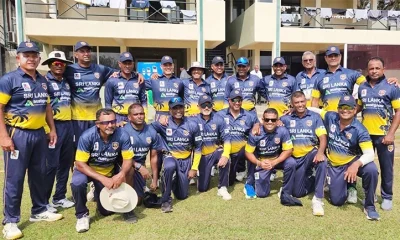
 Sports4 days ago
Sports4 days agoSri Lanka face Australia in Masters World Cup semi-final today
-
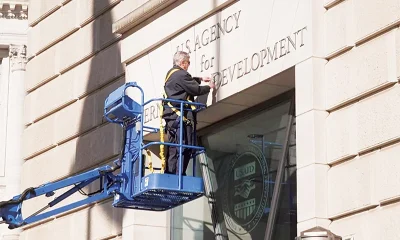
 Features6 days ago
Features6 days agoUSAID and NGOS under siege
-

 Features6 days ago
Features6 days agoDoing it in the Philippines…
-

 Midweek Review5 days ago
Midweek Review5 days agoImpact of US policy shift on Sri Lanka
-

 News4 days ago
News4 days agoCourtroom shooting: Police admit serious security lapses
-
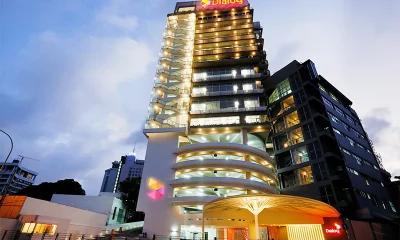
 Business6 days ago
Business6 days agoDialog delivers strong FY 2024 performance with 10% Core Revenue Growth
-
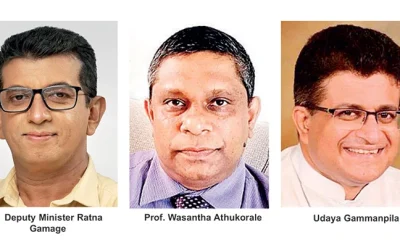
 Business5 days ago
Business5 days agoBudget 2025: A spectrum of reactions and perspectives


